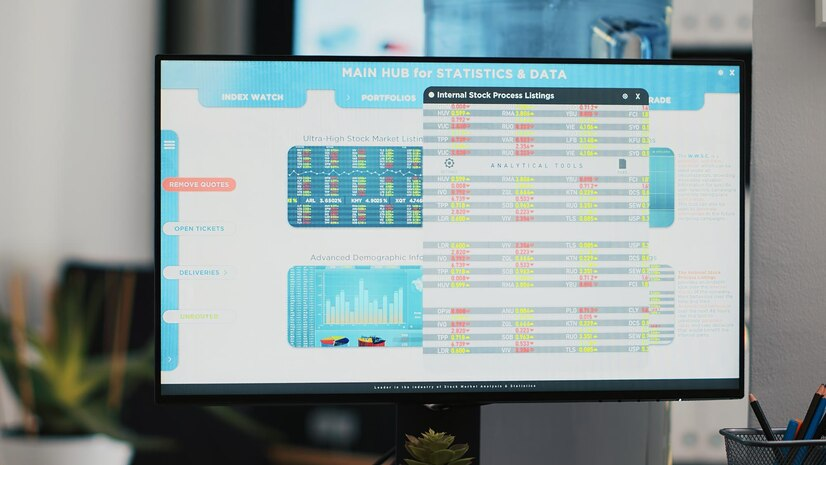
How to Create a Dashboard for Efficient Management of Dental Clinics: A Practical and Comprehensive Guide
Creating a Management Dashboard for Your Dental Clinic: Essential for Monitoring and Enhancing Operational Efficiency, Patient Satisfaction, and Financial Performance
A well-structured dashboard provides real-time insights into key metrics, enabling managers and owners to make data-driven decisions. This guide outlines the main steps to set up an effective dashboard tailored to the specific needs of a dental clinic.
1. Define Your Clinic’s Key Performance Indicators (KPIs)
The first step in creating a management dashboard is to identify the Key Performance Indicators (KPIs) that align with your clinic's goals. KPIs are measurable metrics reflecting performance in critical areas. In a dental clinic, primary KPIs may include:
Financial KPIs: Metrics such as monthly revenue, average revenue per patient, treatment costs, and profit margin provide a clear picture of the clinic’s financial health.
Patient KPIs: Track new patient acquisition, retention rates, patient satisfaction scores, and average wait time. These KPIs help assess the clinic’s ability to attract and retain patients while delivering quality care.
Operational KPIs: Monitor consultation utilization rate, cancellation rates, and no-shows. Managing these aspects helps reduce idle time and optimize resource usage.
Productivity KPIs: Evaluate team performance, including the number of procedures performed, chair productivity, and daily patient flow. These metrics help measure individual and team productivity.
Defining these KPIs focuses attention on areas driving clinic growth and sustainability. It’s essential to select indicators that offer valuable insights aligned with strategic goals rather than trying to monitor too many metrics simultaneously.
2. Choose the Right Dashboard Platform
Once KPIs are defined, the next step is selecting a dashboard platform that meets your clinic's needs. Options range from Excel and Google Sheets to business intelligence software like Tableau, Power BI, or healthcare-specific platforms like Denticon. Consider these factors when choosing the platform:
Ease of Use: Select an intuitive platform that allows your team to interact and interpret data effectively. Platforms with drag-and-drop interfaces and customizable templates are ideal for quick setup.
Integration Capability: Ensure the dashboard platform can integrate with clinic management software, such as EHR, scheduling, and billing systems, to sync data seamlessly.
Customization: Choose a platform offering customization options to adapt the dashboard to your KPIs and specific reporting needs.
Accessibility: If remote metric monitoring is necessary, opt for a cloud-based platform accessible across multiple devices. This flexibility is valuable for managers who need to track performance outside the office.
Choosing a platform that balances customization, simplicity, and integration maximizes dashboard effectiveness.
3. Organize Data Collection and Entry
A dashboard is only as reliable as the data it displays, so establishing a consistent data collection process is essential. Work with the team to ensure all relevant data is accurately recorded and updated. Follow these steps to ensure data accuracy:
Data Automation: Where possible, set up automated data flows from clinic systems to the dashboard. This reduces human error and ensures real-time accuracy.
Data Entry Protocols: For manually entered data, create standard operating procedures (SOPs) to ensure consistency. Training the team on accurate data entry is crucial to maintaining precision.
Regular Data Audits: Schedule data audits to identify discrepancies and correct errors. Periodic checks keep data reliable and relevant.
Frequent Updates: Establish a schedule to update the dashboard. Financial KPIs might be updated monthly, while patient satisfaction metrics can be updated quarterly. Real-time metrics, such as consultation utilization, should be updated automatically or daily.
Organized data collection ensures dashboard reliability, providing precise insights for solid management.
4. Design the Dashboard Layout
The dashboard layout should be intuitive and visually appealing, allowing information to be conveyed quickly. Arrange KPIs in logical sections, grouping similar metrics to avoid visual clutter. Follow these guidelines for a clear and functional layout:
Category Segmentation: Organize KPIs by categories, such as Financial, Patients, Operational, and Productivity, to improve navigation and clarity.
Use of Charts and Tables: Include charts to facilitate trend visualization and period comparisons. Bar, line, and pie charts help simplify data interpretation.
Visual Indicators: Use status indicators, like color-coded alerts (red, yellow, and green), to quickly show each metric's performance against targets.
Interactive Dashboard: If the platform allows, set up interactive filters to let users view specific information, such as performance by period, professional, or service type.
A well-designed layout helps visualize metrics quickly and eases clinic performance analysis.
5. Regularly Monitor and Adjust the Dashboard
After the dashboard is live, it’s essential to monitor and adjust it frequently. This ensures that metrics align with clinic goals and adapt to changes. Consider the following:
Periodic KPI Review: Periodically review KPIs to ensure they are still aligned with the clinic’s goals. As the clinic evolves, some KPIs may need adjustment or replacement.
Team Feedback: Seek feedback from staff to identify missing or unclear metrics. Team members can offer valuable insights into the dashboard’s practical effectiveness.
Data-Based Adjustments: Use dashboard insights for operational and strategic decisions. For example, if cancellation rates are high, implement improvement measures.
Technological Updates and Innovations: Stay updated on new tools or functionalities in the chosen platform that could enhance the dashboard, such as integrations with other software or new chart types.
Consistent monitoring ensures the dashboard remains a useful tool adapted to the clinic’s reality, enabling informed decision-making and continuous improvements.
Conclusion: The Management Dashboard as a Strategic Tool
Creating a management dashboard for your dental clinic provides a detailed and accurate view of operational performance, helping achieve strategic goals. With a well-structured dashboard covering essential KPIs and integrating reliable data, clinic management becomes more agile, and patient care can be optimized.
Investing in a customized, efficient dashboard strengthens decision-making and positions your clinic for sustainable, data-driven growth.
For more information about our work and how we can assist your clinic or practice, please get in touch!
